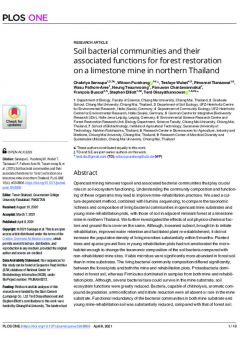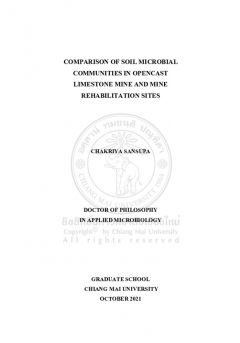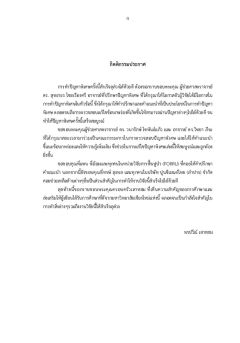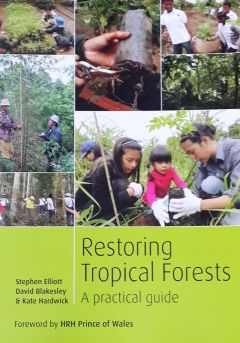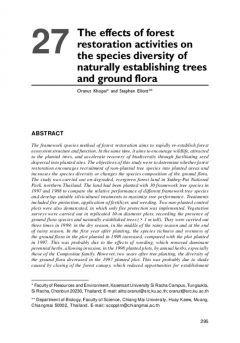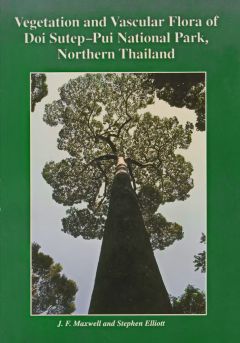Publications
1: Soil bacterial communities and their associated functions for forest restoration on a limestone mine in northern Thailand
ABSTRACT: Opencast mining removes topsoil and associated bacterial communities that play crucial roles in soil ecosystem functioning. Understanding the community composition and functioning of...
2: Comparison of Soil Microbial Communities in Opencast Limestone Mine and Mine Rehabilitation Sites
Opencast mining is considered as an extreme form of land degradation, requiring an intensive array of rehabilitation practices. The mine rehabilitation practice, in the semiopencast limestone mine...
3: Diversity of Ground Flora in Restoration Area of The Siam Cement (Lampang) Co., Ltd Limestone Quarry
Ground flora communities in framework species method restoration area of Siam cement (Lampang) Co. Ltd. limestone quarries were studied. adding top soil with the value of 2.81, 2.50 and 1.99,...
4: Restoring Tropical Forests: a Practical Guide
Available in English, Spanish and French The authors at a publishers' meeting, Kew 2012Restoring Tropical Forests is a hands-on guide to restoring degraded tropical forest ecosystems. Based...
5: The effects of forest restoration activities on the species diversity of naturally establishing trees and ground flora
The framework species method of forest restoration aims to rapidly re-establish forest ecosystem structure and function. At the same time, it aims to encourage wildlife, attracted to the planted...
6: Vegetation and Vascular Flora of Doi Sutep-Pui National Park, Northern Thailand
Max's ground-breaking study of Doi Suthep resulted in perhaps the most complete flora and vegetation description of any of Thailand's protected areas at the time of publication and it was the...
7: Forest Restoration for Wildlife Conservation
In 2000, there was little interest in restoring tropical forest ecosystems as wildlife habitat. The need was to consolidate the concept and to identify how scientific research might contribute...
8: The Chiang Mai Research Agenda for the Restoration of Degraded Forestlands for Wildlife Conservation in Southeast Asia
Back in 2000, forest restoration research was far from main stream. Deforestation was regarded as irreversible and the idea that ecologists could actually find a way to restore tropical forest...
-
- 10: 8
- 37: 8
- 11: 6
- 12: 5
- 13: 4
- 35: 4
- 14: 3
- 33: 3
- 34: 3
- 15: 2
- 36: 2
- 39: 2
- 40: 1
-
- 47: 3
- 19: 1
- 26: 1
- 28: 1
- 42: 1
- 46: 1
-
- 48: 6
- 21: 3

